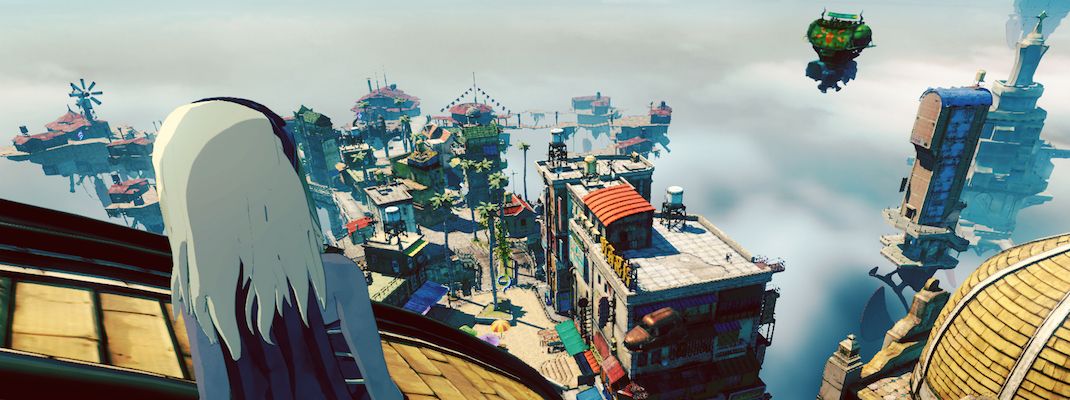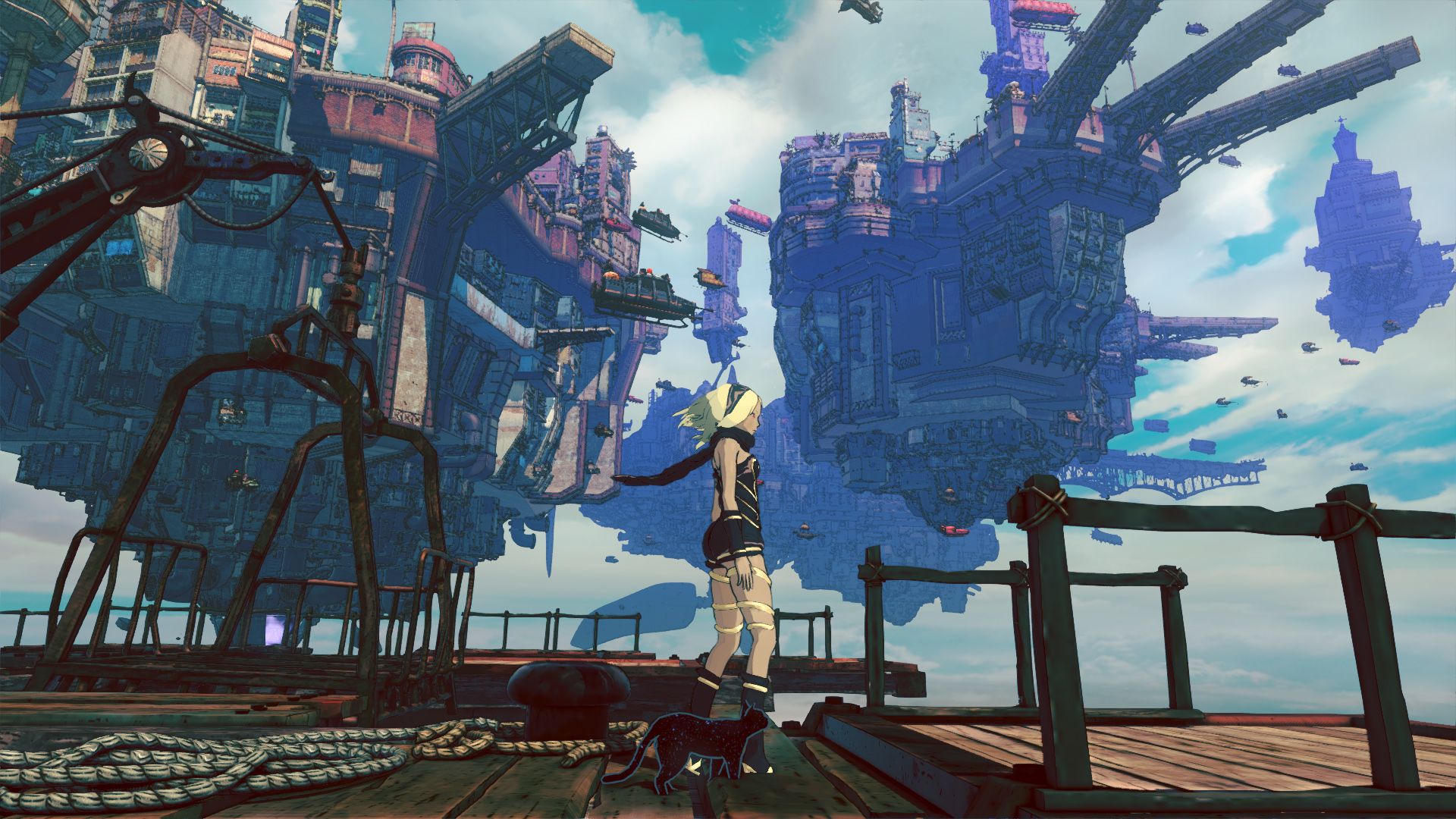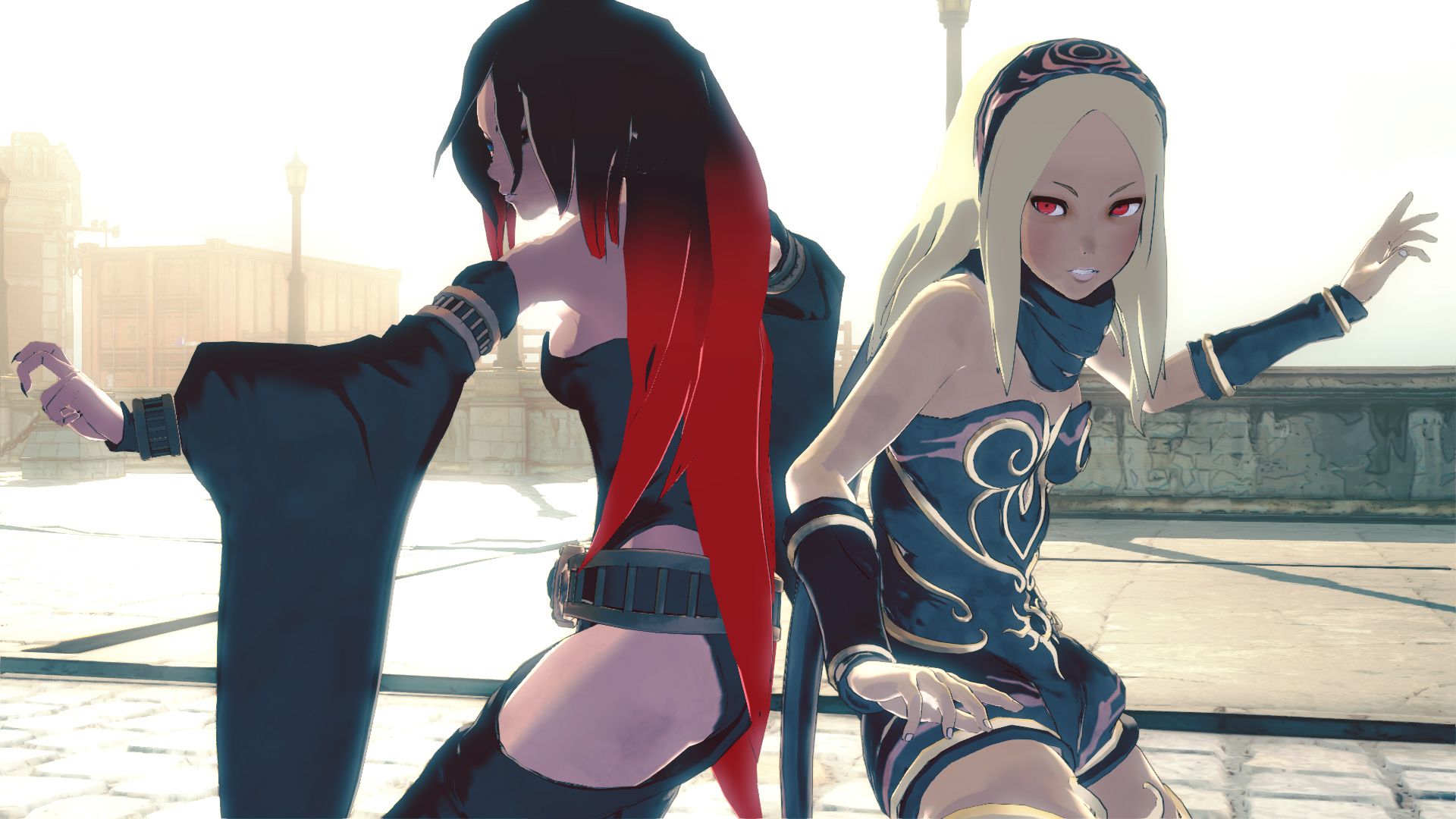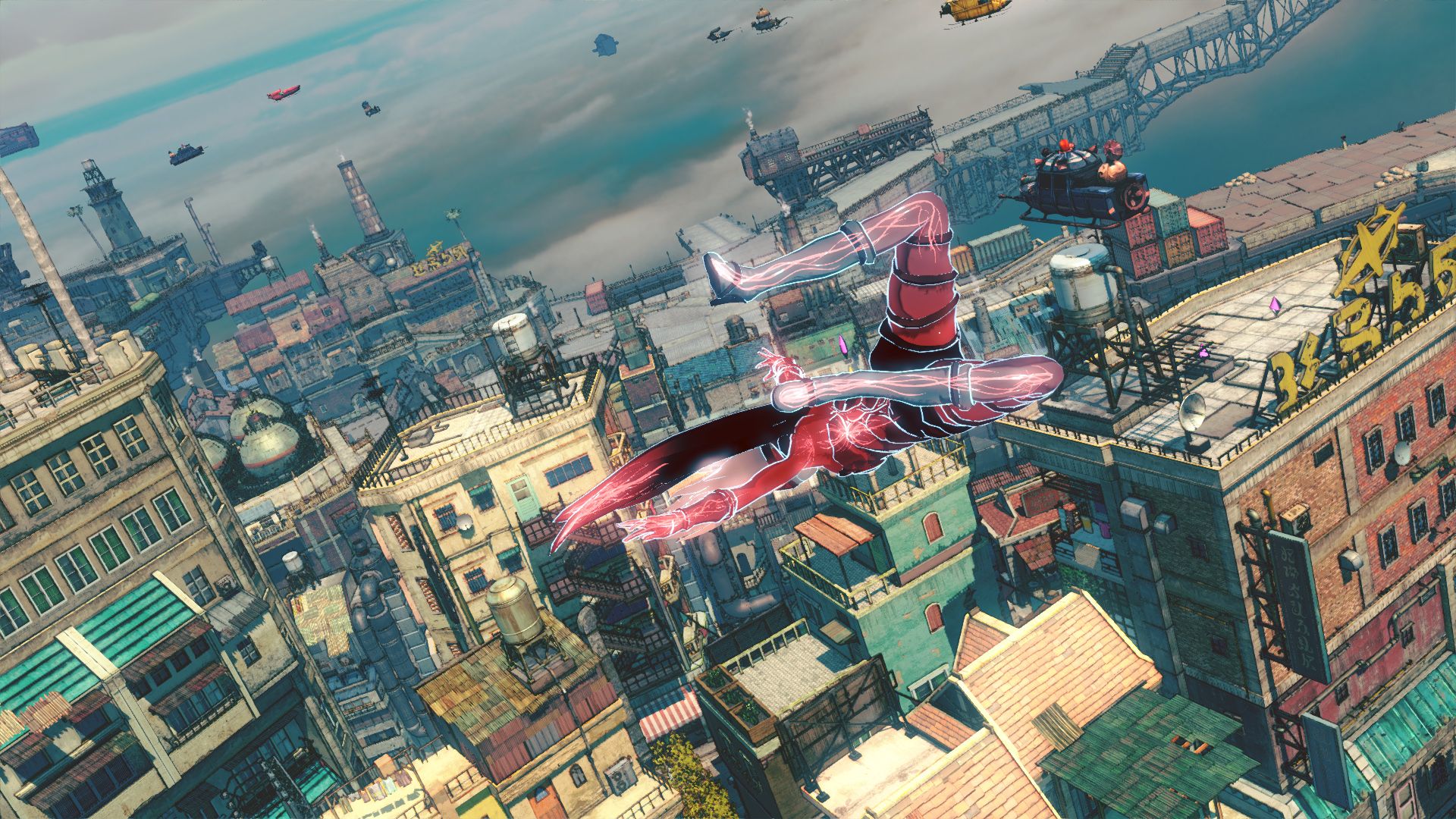Checking the Score is a feature about video game music, composers, musicians and tools of the trade.
An area I touched upon less so than others in my review of Gravity Rush 2 was its music. Don’t get me wrong, my avoidance on covering that area was not by way of some middling and/or mediocre discovery; nor was it an aspect I felt didn’t add to the all-round experience of what is still — despite my rather lower-than-average consensus — a good game. 3.5/5 ≠ bad folks, no matter how much [some] people might think so. Call it a recognition of a deserved spot…or call it desperation by way of a need to cover a game released in January (of which there are quite a few, just notably on the horizon in the latter half of the month).
Whichever way you look at it, the music of the original Gravity Rush sparked the kind of joyous, investigative discovery that often reflected the hallmarks of the game’s main protagonist, Kat, in terms of her personality. Positive, upbeat, focused even in the more perilous of situations; it’s a stance the soundtrack of Gravity Rush 2 continues on with, encompassed by its lively mix of blues and jazz alike. Ensuring that at the heart of its production, when tackling the perilous job of audibly describing in-game regions and locales, that the discovery of a new locale holds many of the same initial reactions as visiting a new city/country/continent in real-life.
On visuals alone, Gravity Rush 2 takes from many social cultures and geographic placements based on real-life locations on a global level. Be it South America, Asia, even Anglo-speaking cities with their towering buildings with industrial leanings, the game’s music matches the visual change with differing uses of rhythm, melody and phrasing to perhaps further elaborate on developers Japan Studio/Project Siren’s broadening of visual influence. Hekseville in the previous game was by no means a stale or otherwise stagnant location and even if Gravity Rush didn’t quite throw up Super Mario levels of conflicting settings — no grass, desert, ice, fire sequencing here — its soundtrack made what was a handheld-limited scale, on a structural front, feel just that bit more inviting and aesthetically alive.
The sequel, now on better hardware, increases that musically as well as graphically by managing to fuse a wide assortment of musical identities in, as previously noted, with the common thread that the player — like Kat — is experiencing a new journey of exploration and curious adventuring. Because of this, the soundtrack is aimed at exemplifying the player-character more so than the locales themselves. The best example is the theme to Lei Havina (or the Old Settlement as it’s nicknamed in brackets). The location itself, which physically resides at one of the more higher points in the sky and is also the most grandiose and possibly tranquil (a blatant reference to the particular class of people who live/reside in this part of the World), would have you think some manner of extravagant, perhaps pompous classical music plays upon navigating such a place.
When in fact, the music — though still but a equivocal response to one’s/Kat’s state of mind — instead decides to tackle the feat of musically scoring the setting without any sign of prejudice or otherwise antagonistic bias. Unlike character themes in general, which can often reflect a character’s actions or past history rather than their state of mind at present, it’s clear the game’s lead composer Kohei Tanaka wants to instil a non-partisan, neutral mind-set on how both we and Kat perceive the many societies of Gravity Rush 2 from a narrative stand-point. Without giving too much away or indeed spoiling anything plot-wise, there’s a reason for this lack of reliance on dynamics or timbre within the melodies comprising each locale’s theme. Even the main battle theme remains idealistically constrained within its palette of piano and brass instrumentation.
Even at its most extreme, when a set-piece crops up or a major turning point in the story unfolds, there’s no sudden bombast or orchestral high to inject some artificial manner of adrenaline into proceedings. Instead, the music seems to better reflect the unpredictable, but not uncontrollable, scene unfolding. Tanaka’s work on anime may well be the reason why Gravity Rush 2’s playful expression of sound - particularly the way percussion and guitar blend in with the jazz elements - does so well at adapting to the scenario without shamelessly relying on bombastic, musical tropes. Gravity Rush 2 does well like it can fit right at home as a pure animation piece rather than a full interactive game and that’s in no way some criticism of an equally fictitious accusation of the game being cinematic or…bluntly…not a game. Gameplay alone certainly alleviates any concern people might have.
Like video games, anime can often try to carve out particular musical feats that have no place in the current situation on show and while the game too is not without a solemn piano piece here and there, my point is that Tanaka and co want this to be a game, as much a soundtrack, that draws on personal feeling rather than visual spectacle. There are notable grandiose moments and points in the game that are as far as subtle as one can get, but the music doesn’t deviate — be it instrumentally or indeed emotionally — from the primary drive of being one of narrative. Of Kat’s journey, as much the player, in this strange new World with new challenges and new struggles yet familiar all the same.
It’s a game, as much a soundtrack, that is indeed a follow-on from what players experienced in the original entry, but Gravity Rush 2’s refusal to introduce a greater amount of different ideas, at the risk of becoming bloated with such potential conflict, actually keeps the experience (ironic as this may sound) grounded throughout. As a result, sticking to my review as I will, one of Gravity Rush 2’s hidden strengths will indeed be its music as much its gameplay mechanics. Not because of its choice of instruments and the usage of said instruments, but how it more so seldom gets carried away with the spectacle presented to us at any given time, even at its most extravagant. The music instead homes in on the thought process and rallying of emotions likely heralded by Kat herself as indeed the player too at the point of some new revelation or unveiling of a new big-bad. Because of this, this story-led transitioning of sound allows the soundtrack to be both optimistic yet illustrative at the same time. It’s music that drives you onward but peaks your curiosity and that’s exactly what a game of this structural and aesthetical intent should follow.
To dive even deeper into the wonderful world of video game OSTs, be sure to read our complete Checking the Score series.




